Meet Argentinosaurus, The Colossal Behemoth Of The Dinosaur Era

Imagine a creature so massive that it made the ground shake with each footstep – that’s Argentinosaurus for you! This enormous dinosaur roamed South America about 95 million years ago during the Late Cretaceous period.
As one of the largest land animals ever to exist, Argentinosaurus continues to fascinate scientists and dinosaur enthusiasts alike with its incredible size and mysterious lifestyle.
A Name Worthy Of Its Homeland

Discovered in Argentina in 1987, this massive dinosaur earned its name from its country of origin. The name Argentinosaurus huinculensis comes from Argentina plus ‘sauros’ (Greek for lizard), with ‘huinculensis’ referring to the specific region of discovery – Plaza Huincul.
Paleontologists José Bonaparte and Rodolfo Coria made this incredible find, unearthing what would become one of paleontology’s most impressive discoveries. The fossils immediately indicated they had stumbled upon something extraordinary – a dinosaur of record-breaking proportions.
The Ultimate Heavyweight Champion

Tipping the scales at an estimated 70-80 tons, Argentinosaurus weighed as much as 14 adult elephants combined! This colossal weight makes it a strong contender for the heaviest land animal ever to walk the Earth.
Scientists debate the exact weight, with some estimates reaching up to 100 tons. The challenge comes from having incomplete fossil remains. Weight calculations rely on comparisons with better-known relatives and mathematical models based on bone circumference and structure.
Stretching To Incredible Lengths
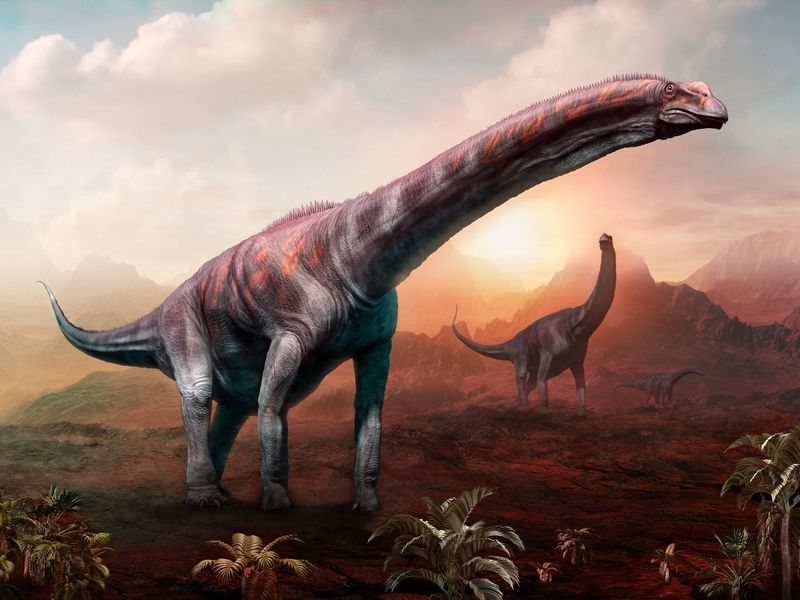
From nose to tail, Argentinosaurus stretched an astonishing 30-40 meters (100-130 feet) in length. Picture this – that’s longer than three school buses lined up end to end! Its neck alone accounted for much of this impressive length, allowing it to reach high into ancient treetops. The long tail served as a counterbalance to its massive neck and helped the dinosaur maintain stability when moving its enormous body.
A Towering Giant Among Giants

Standing approximately 18 meters (60 feet) tall at its highest point, Argentinosaurus could easily peek into a sixth-floor apartment window! This incredible height came primarily from its long neck, which stretched upward like a living skyscraper.
The dinosaur’s shoulders alone stood about 7 meters (23 feet) off the ground. For comparison, that’s taller than a typical two-story house. This extraordinary stature gave Argentinosaurus access to vegetation that smaller dinosaurs couldn’t reach.
Puzzling Together A Giant
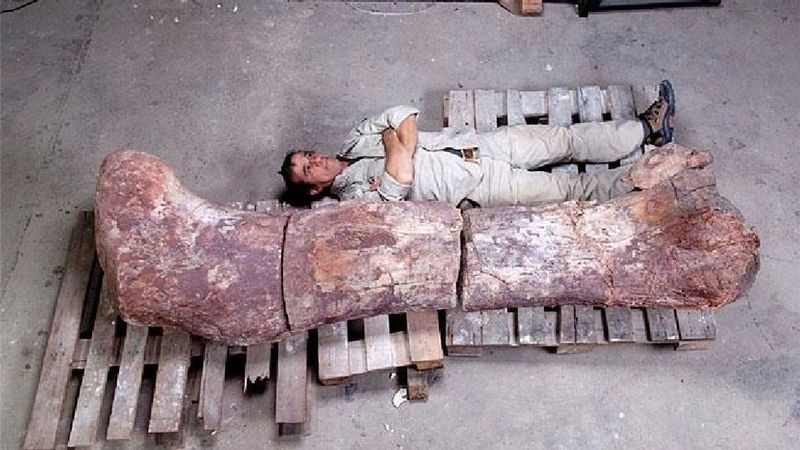
Despite its fame, Argentinosaurus is known from surprisingly few fossils. The original discovery included only vertebrae, ribs, and part of a leg bone – less than 10% of the complete skeleton! Scientists must fill in the blanks using knowledge from related dinosaurs.
This incomplete picture creates ongoing debates about its exact appearance and proportions. Each new titanosaur discovery helps refine our understanding of what Argentinosaurus truly looked like.
The Vegetarian Colossus
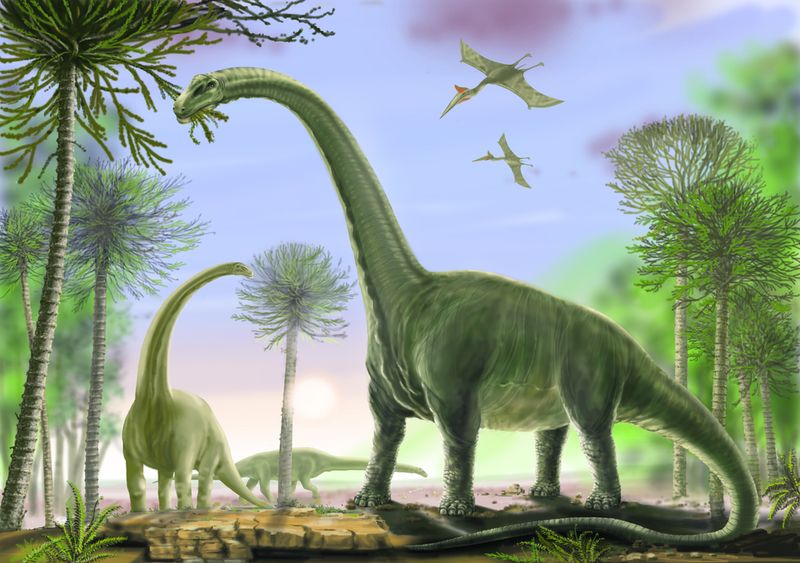
Despite its intimidating size, Argentinosaurus was a gentle plant-eater belonging to the sauropod group. These dinosaurs were exclusively herbivorous, using their long necks to browse treetops for tender leaves and shoots.
Its diet likely consisted of massive quantities of conifers, ginkgoes, and other Cretaceous plants. Scientists estimate it may have consumed up to a ton of vegetation daily to fuel its enormous body!
Without teeth suited for chewing, it probably swallowed plant material whole to be processed by gastroliths – stones in its digestive tract.
Built For Strength, Not Speed
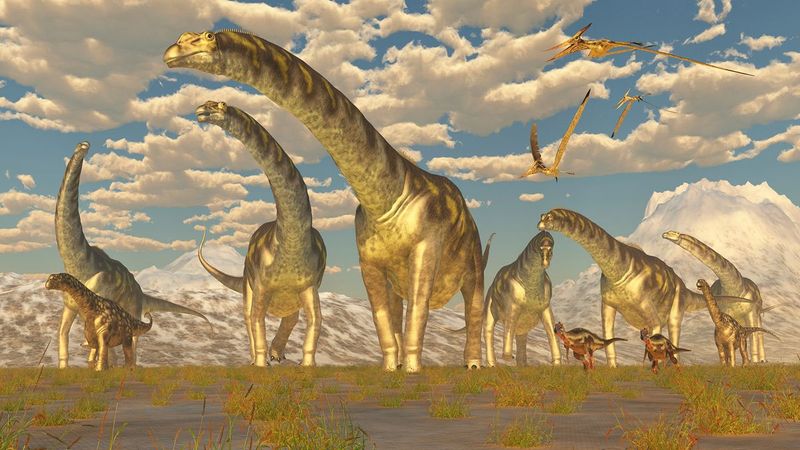
With legs like living columns, Argentinosaurus was built for supporting weight rather than winning races. Its massive limb bones were among the strongest biological structures ever to exist, necessary to support its tremendous bulk.
Scientists estimate it moved at a leisurely pace of perhaps 5-8 kilometers (3-5 miles) per hour. The dinosaur’s enormous size meant that even this slow movement would cover significant ground with each step. Its footprints would have been over a meter wide, creating mini-earthquakes with each thunderous step!
The Titanosaur Family Tree
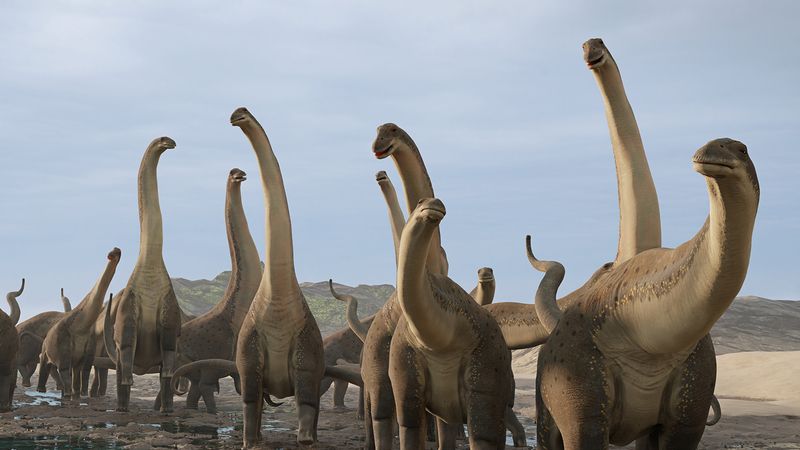
Argentinosaurus belongs to the titanosaur group – a diverse family of sauropod dinosaurs that dominated the Southern Hemisphere during the Cretaceous period. These remarkable creatures included many of the largest dinosaurs ever discovered.
Other famous titanosaur relatives include Patagotitan, Dreadnoughtus, and Puertasaurus. Each new titanosaur discovery helps scientists understand how these giants evolved and spread across ancient Gondwana. Argentinosaurus represents one of the most extreme examples of the titanosaur body plan.
Growing Up Enormous

From tiny egg to towering titan, Argentinosaurus underwent one of the most extreme growth journeys in animal history. Hatching from eggs roughly the size of footballs, these dinosaurs may have grown more than 10,000 times their birth weight!
Scientists believe they reached adult size within 15-40 years – an incredibly rapid growth rate. Young Argentinosaurus likely lived in herds for protection, as they would have been vulnerable to predators. Only after reaching several tons would they become effectively immune to predation.
The Ancient Forests It Called Home
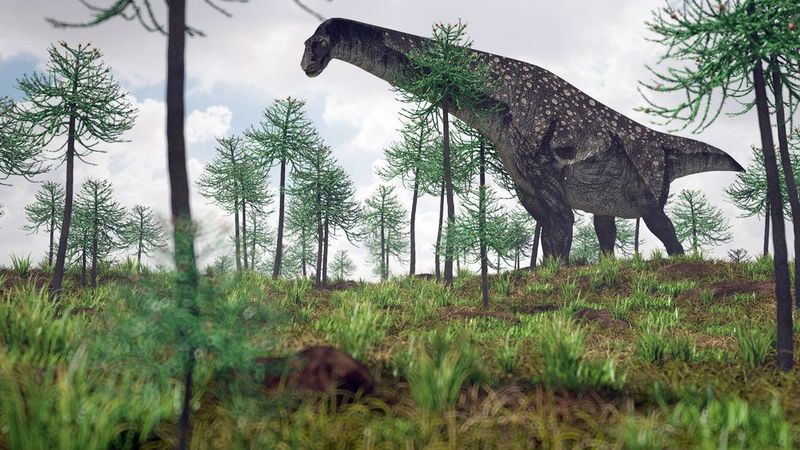
During the Mid-Cretaceous period, Argentina looked nothing like today’s landscape. Argentinosaurus roamed through vast forests of primitive conifers, ginkgoes, and early flowering plants under a warmer climate.
Rivers and floodplains crisscrossed these woodlands, creating diverse ecosystems. The region experienced seasonal rainfall patterns that affected plant growth and animal migrations. These ancient forests provided the enormous quantities of vegetation needed to sustain herds of these colossal dinosaurs.
Few Dared To Challenge It

Even the fiercest predators thought twice before attacking an adult Argentinosaurus! The primary threat came from Giganotosaurus – a massive carnivore that shared its habitat and reached lengths of 12-13 meters (40-43 feet).
However, these predators likely targeted young or weak individuals rather than healthy adults. A full-grown Argentinosaurus could have easily crushed an attacker with a single step.
Some scientists theorize that Giganotosaurus may have hunted in packs to bring down titanosaurs, though this remains speculative.
Traveling In Thundering Herds
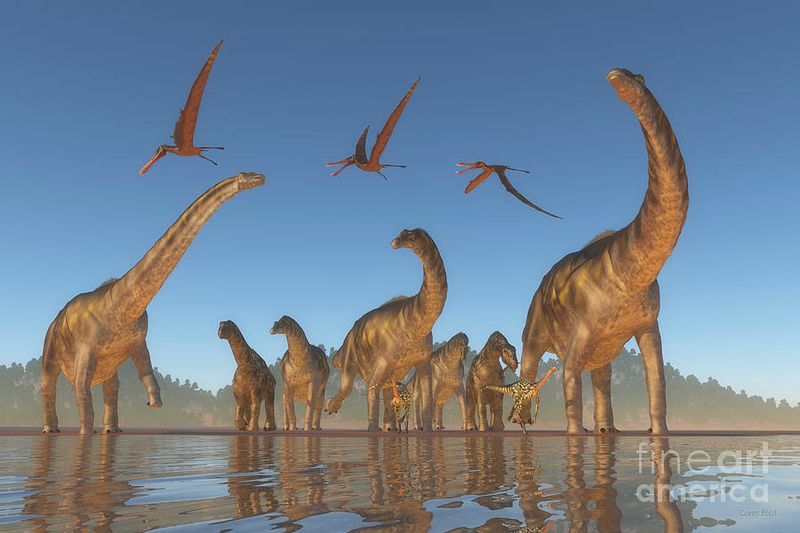
Fossil evidence suggests titanosaurs like Argentinosaurus likely traveled in herds – imagine the ground-shaking spectacle of multiple 70-ton giants moving together! This social behavior would have provided protection for vulnerable young.
Trackway discoveries from related sauropods show parallel footprint paths, supporting the herd theory. Scientists believe these groups may have included individuals of various ages, creating multi-generational family groups.
The combined appetite of an Argentinosaurus herd would have stripped entire areas of vegetation, necessitating constant movement.
The Mystery Of Its Extinction
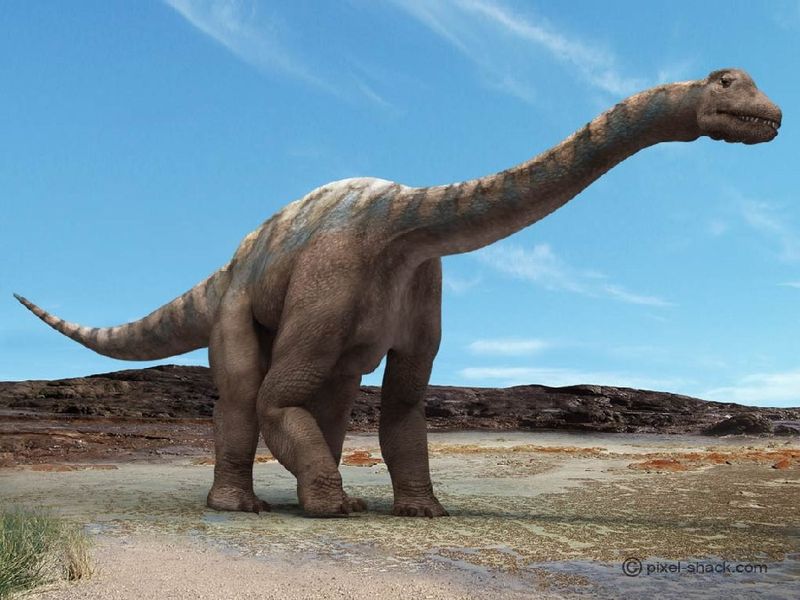
Argentinosaurus disappeared from Earth’s stage millions of years before the famous end-Cretaceous extinction that wiped out most dinosaurs. It lived around 95-92 million years ago, while the asteroid impact occurred about 66 million years ago.
The reasons for its extinction remain mysterious. Climate changes, competition from other plant-eaters, or evolutionary replacement by more specialized titanosaurs might explain its disappearance.
Whatever the cause, the reign of Earth’s largest land animals came to an end, leaving only their fossilized remains as testament to their existence.






